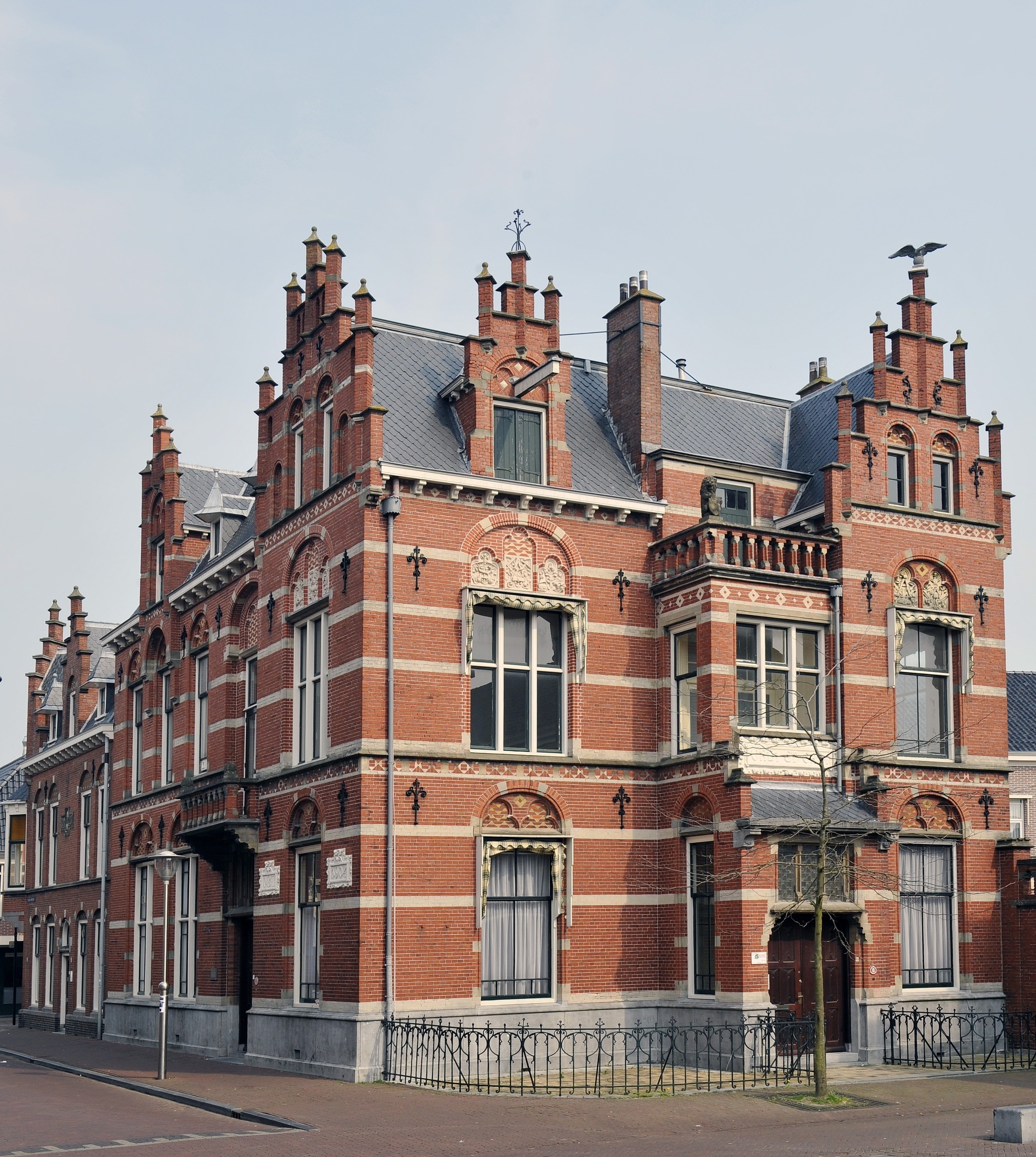
OBW building (Kleine Kerkstraat)
The Old Civil Orphanage in Sneek on Kleine Kerkstraat is an imposing building with a strikingly beautiful facade. What many people do not know is that not only the exterior is beautiful, the interior is also preserved in impressive condition. Indeed, the OBW administration office is included in the list of national monumental interiors because of its very well preserved interior.
New buildings
In 1581, the Old Burger Weeshuis (OBW) was founded and settled in the abandoned buildings of the Kruizebroedersklooster. For the growing number of orphans, a new building is erected in 1854 to the design of architect Isaäc Warnsinck. At the beginning of the twentieth century the need arose for a representative administration building, with meeting space for the guardians and guardians, and room for offices and archives. This building rises to the design of architect Nicolaas Molenaar in 1904 on an undeveloped site where the convent chapel had previously stood. Molenaar built it in Old Dutch style with references to the late Middle Ages, such as the stepped gables crowned with pinnacles.
New art
The interior surprises because of the form language of the "new art", which was modern at the time, combined with Old Dutch and medieval elements. Stylized floral motifs and plants and curved lines incorporated into the stained glass windows of the representative rooms on the first floor were designed according to the latest fashion. The wall and ceiling paintings are decorated with Gothic ornaments. In the hallway, the framing of the doors and the decoration of the trough vaults stand out. Here is a display case with dolls in the orphan costumes worn by the children until 1912.
In the 1950s, the interior underwent modernization, covering valuable stained glass windows and decorated ceilings. Under the direction of local restoration architect J.D. van der Molen, these are resurfaced and restored in 1981.
Meeting rooms
The most important rooms are the two meeting rooms that are connected: a room en suite. In front is the guardians' room, and behind, separated by a stained-glass wall with sliding doors, the guardians' room. The ceilings are beautifully decorated with stencil paintings and lilies. Both rooms have a black marble fireplace and oak cabinet doors and ditto meeting-room furniture. On the walls hang paintings by such Frisian artists as Ids Wiersma and Bouke van der Sloot. In the room of the guardians is a buffet with copper tap jugs and above it two plates with the names of the guardians.
It is not only the furnishings of the board rooms, but also the office furnishings with related objects. Striking in all rooms is the relatively large number of objects on which the letters "OBW" are affixed.
In addition to tangible items, customs have also been honored. For example, the annually rotating table arrangement of the board during meetings and the associated retirement schedule.
Four centuries
The policy of the guardians at the 400th anniversary is characterized as "strict, but full of care. This is exactly what the interior of the board rooms exudes: strict and solid and at the same time surrounded with care and provided with a playful touch.
After the advent of the General Assistance Act in 1964, the OBW became an institution of benevolence, with the aim of promoting general cultural and social interests in the municipality of Sneek.
Currently only the boardrooms and adjoining rooms are still in use by the OBW foundation, the remaining rooms are rented out as offices.
After more than four centuries, the OBW remains a vibrant institution, which has made a remarkable contribution to building in the Netherlands with its more than one hundred-year-old administration building. The interior ensemble in the administration building is a fine example of early-twentieth-century administration quarters, in which the movable goods - partly stored in the various cupboards - are carefully preserved.
(source: OBW Sneek)